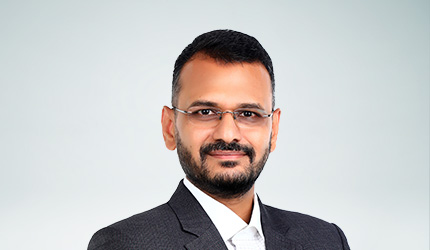A half century ago, physicist and philosopher Thomas Kuhn first coined the phrase “paradigm shift” to describe a fundamental change in assumptions.
The term has since been over-applied to everything from economics to politics – even becoming the title of an episode of Star Trek! Yet while so often misused, I believe the term paradigm shift perfectly describes what is happening in underwriting today.
A paradigm is a shared set of processes that thrive for decades -- only to be replaced by a new reality. For more than two centuries, there has been little change to the underwriting process or the role of an underwriter. In recent years, digitalization, the introduction of "advantage" and "privilege" programs, and guaranteed issue and simplified issue options have helped improve the customer experience and conversion rates. Automatic or "e" underwriting tools and rules emerged, helping to improve straight-through processing. But, by and large, the process of risk selection and underwriting has remained unchanged. Same paradigm. No shift.
If we look at the last five to seven years, however, we see a different story. The availability of alternate sources of information has fundamentally changed our understanding of risk. With the Internet of Things (IoT), devices on our bodies and in our pockets provide data on our psychological behaviors and physical health. Insurers now have access to more information about applicants than ever before.
Alternate sources of information currently being used for risk selection include:
- Credit-based insurance scores: Who would have thought attributes on a consumer's credit report might be predictive of mortality and lapse risk? And yet credit data can indicate behavioral risk, which, when coupled with medical factors, can provide a more holistic view of an applicant’s overall risk.
- Predictive analysis: Data science is opening new doors for underwriters. In addition to age, gender and occupation, non-traditional variables gathered from prescription scripts to motor vehicle records can be used in predictive models to provide faster and fluidless competitive offers.
- Wearables: Insurance-linked wellness programs already rely on data from wearable devices – from smart watches to blood glucose monitors, but their full potential as a risk selection method is still far from being realized.
What's next? Could social technologies, selfies and facial recognition represent a new frontier in risk prediction? And going beyond data, could advances in other scientific disciplines further enable or complicate risk assessment.
- Behavioral science: The psychological study behind judgment and decision-making has become known as behavioral economics, and has spread to the fields of social science, marketing, finance and insurance. Could knowing more about human behavior and biases help insurers craft questions that prevent fraud and anti-selection rates, improve disclosure, and reduce the need for medical and body fluid examinations?
- Tele-underwriting: Whether Big T or little t, tele-underwriting is mostly used to supplement the current risk selection process. But what if it were combined with artificial intelligence (AI) technologies, behavioral science, and e-underwriting? The possibilities could be endless.
And we haven’t even spoken about blockchain, technology that has enormous potential (albeit with some hurdles ahead). The blockchain’s public ledger enables parties to safely trade and transact digitally without going through a trusted third party. This trend of digitizing the world around us has changed how we work and consume. Blockchain technologies promise to take this one step further by changing how we trust. While blockchain is still in the exploration phase and only time will tell how it will actually impact underwriting, interesting times are surely ahead.
Not so far into the future, the skillsets required of an underwriter could be much different than they are today. Rather than being known as a hurdle for business, underwriting could be viewed as an enabler. To borrow a phrase from Star Trek, perhaps it is time for underwriters “to boldly go where no man has gone before" and explore new possibilities to improve the customer experience.



